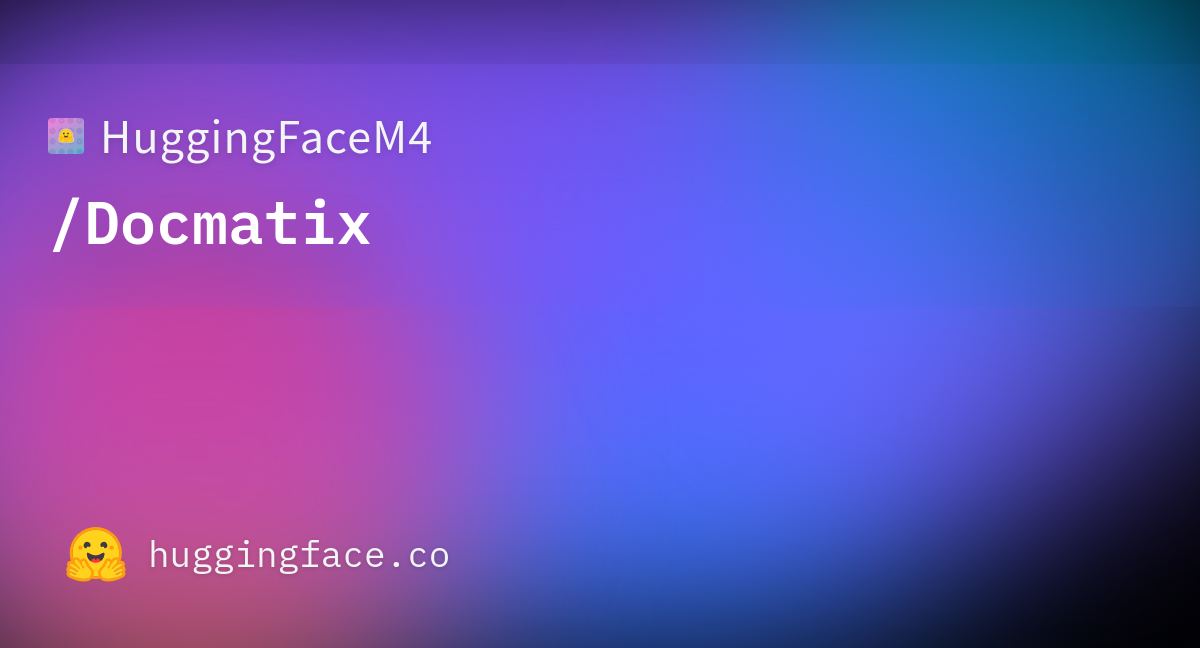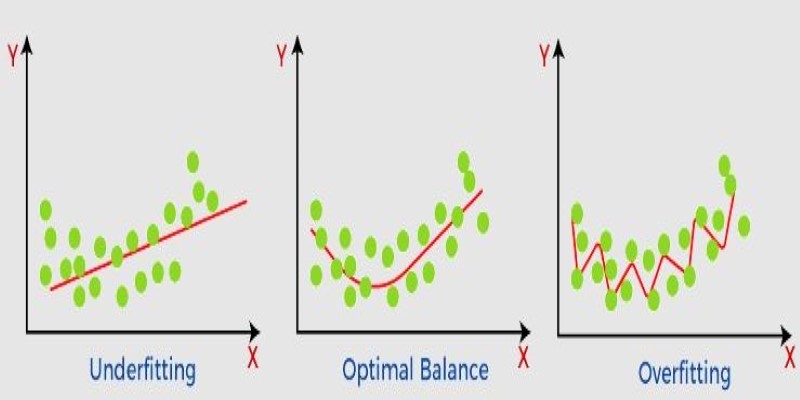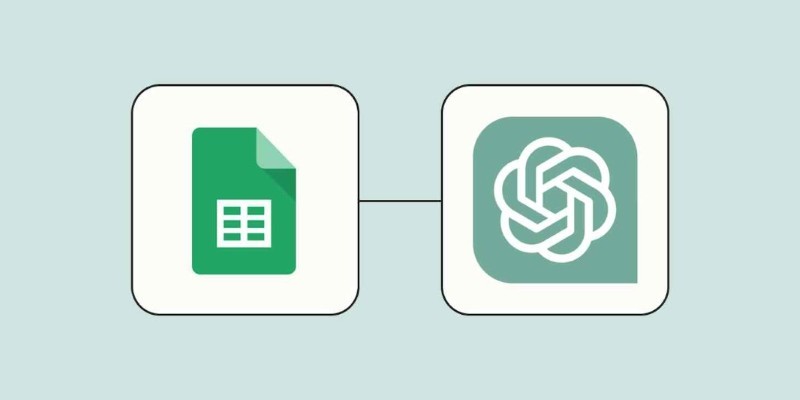Advertisement
When trying to teach a machine how to understand documents the way we do, you quickly realize it’s not just about reading text. There’s layout, font styles, logos, tables, stamps, and a ton of formatting quirks that humans process without thinking. Machines don’t do that automatically. That’s where datasets like Docmatix come into play.
Docmatix isn’t just big. It’s built in a way that reflects how real-world documents work — invoices, forms, memos, IDs, manuals, and more. This makes it especially useful for training systems that need to answer questions by “looking” at both the text and how that text is arranged. Let’s break down what makes Docmatix stand out in the world of Document Visual Question Answering, or DocVQA.
At its core, Docmatix is a dataset designed to help machines understand and answer questions about documents by analyzing both their content and layout. However, this isn't just about assembling scanned files and adding a few prompts. It's a curated, diverse, and structured dataset comprising several thousand documents that cover dozens of document types.

Most older datasets either focus on the text part of documents or layout understanding, but not both in a balanced way. Docmatix brings both into play with clear intent — training systems that can handle the messiness of real documents. Not just clean, perfect PDFs. We're talking about wrinkled, scanned, handwritten, cropped, and annotated documents — the kind that appear in actual offices and databases.
Each document in the dataset is paired with multiple questions that refer to either the entire page, a specific region, or something that depends on both reading and interpreting layout. This makes the problem closer to how a human would approach it: read, look around, consider the context, and then answer.
The design of the Docmatix dataset makes it very practical. It includes:
Over 300,000 QA pairs: These are human-generated questions and answers based on document images.
Multiple document types: Forms, tax records, academic transcripts, user manuals, receipts, and more.
Visual reasoning elements: Many questions require understanding tables, layout zones, or text blocks placed in unique spots.
OCR-aligned: Each image is paired with OCR (Optical Character Recognition) output so models can compare raw images with extracted text.
Bounding boxes: These highlight the exact location of relevant text snippets or fields.
Multi-lingual support: There’s a chunk of documents in languages other than English, which gives it more reach than most datasets.
By including OCR output and visual features together, Docmatix allows models to align the semantic meaning of the words with where and how they appear on the page. And that’s exactly what makes it so useful.
In traditional VQA (Visual Question Answering), models mostly work with natural images — like pictures of street signs, animals, or objects. But DocVQA is more technical. It deals with structured and semi-structured data that need both visual and textual reasoning. For example:
Now imagine training a model to spot that, especially when every invoice looks slightly different.
This is where Docmatix becomes handy. It doesn’t just offer variety; it offers functional diversity — invoices with rotated text, partially filled forms, old-style reports, annotated images with handwriting, and blurred stamps. That kind of noise is what models must learn to handle.
Models trained on Docmatix learn not just to read but to locate and infer. They don't need everything to be obvious or clean. That's a big step toward making DocVQA systems more reliable.
If you’re planning to train a Document VQA system using Docmatix, here's how you can structure the process:

Start with document images from the dataset. You’ll run OCR on these images to extract text. Most models use engines like Tesseract or Google’s OCR system for this.
You’ll get:
Some entries in Docmatix already have OCR applied, which can speed up experimentation.
After OCR, it's time to understand the structure. This includes:
Docmatix provides layout annotations, which can be used to train models that do layout-aware parsing.
Feed the model with a combination of:
You can train using transformer-based models like LayoutLMv3 or Donut, which are designed to handle multi-modal input.
Training here is more than just matching words — it’s learning spatial awareness. For instance, understanding that a question asking “What is the total?” likely refers to the bottom right of a receipt or an invoice.
Docmatix comes with suggested evaluation benchmarks:
These help you track whether your model is actually learning to reason visually or just guessing based on keywords.
Docmatix isn't just another dataset. It presents a clear and realistic challenge to the field of Document Visual Question Answering by combining the challenging aspects of OCR, layout interpretation, and question answering into a single package. Models trained on it learn to function in real-world document scenarios, not lab-perfect samples.
If you're building a DocVQA system that needs to work with messy, diverse, and everyday documents, Docmatix provides the kind of training data that forces your model to become smarter. Not just better at reading but better at understanding where to look and how to connect pieces of information that aren't always in obvious places. That's the edge it offers.
Advertisement

What non-generalization and generalization mean in machine learning models, why they happen, and how to improve model generalization for reliable predictions

Know how AI transforms Cybersecurity with fast threat detection, reduced errors, and the risks of high costs and overdependence

IBM showcased its agentic AI at RSAC 2025, introducing a new approach to autonomous security operations. Learn how this technology enables faster response and smarter defense

How IBM expands AI features for the 2025 Masters Tournament, delivering smarter highlights, personalized fan interaction, and improved accessibility for a more engaging experience

Learn how to install, configure, and run Apache Flume to efficiently collect and transfer streaming log data from multiple sources to destinations like HDFS

What's changing inside your car? A new AI platform is making in-car assistants smarter, faster, and more human-like—here's how it works

Learn the top 5 AI change management strategies and practical checklists to guide your enterprise transformation in 2025.

Nvidia is set to manufacture AI supercomputers in the US for the first time, while Deloitte deepens agentic AI adoption through partnerships with Google Cloud and ServiceNow

How to use ChatGPT for Google Sheets to automate tasks, generate formulas, and clean data without complex coding or add-ons

How MPT-7B and MPT-30B from MosaicML are pushing the boundaries of open-source LLM technology. Learn about their architecture, use cases, and why these models are setting a new standard for accessible AI

Watsonx AI bots help IBM Consulting deliver faster, scalable, and ethical generative AI solutions across global client projects

Discover ten easy ways of using ChatGPT to analyze and summarize complex documents with simple ChatGPT prompts.